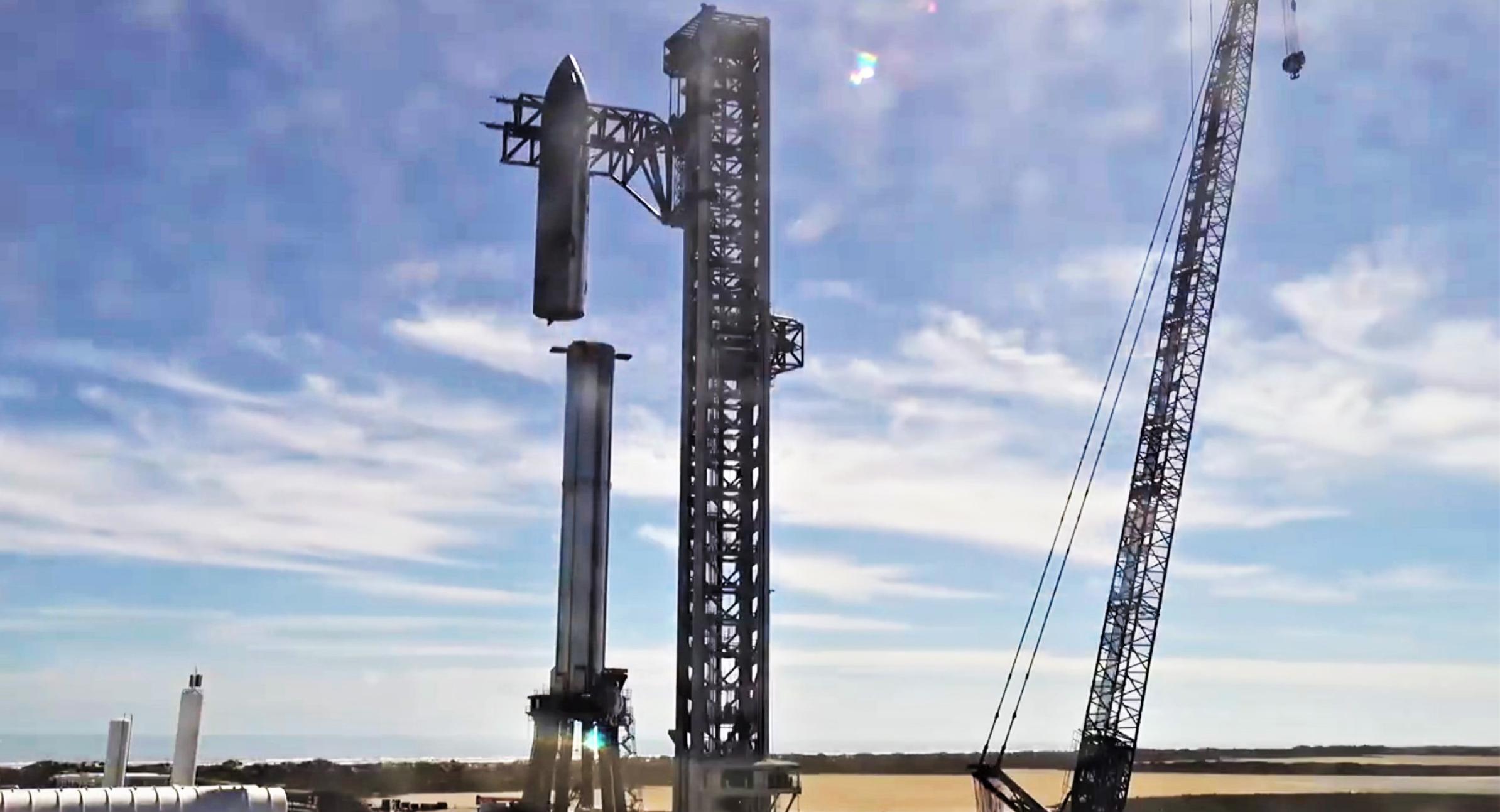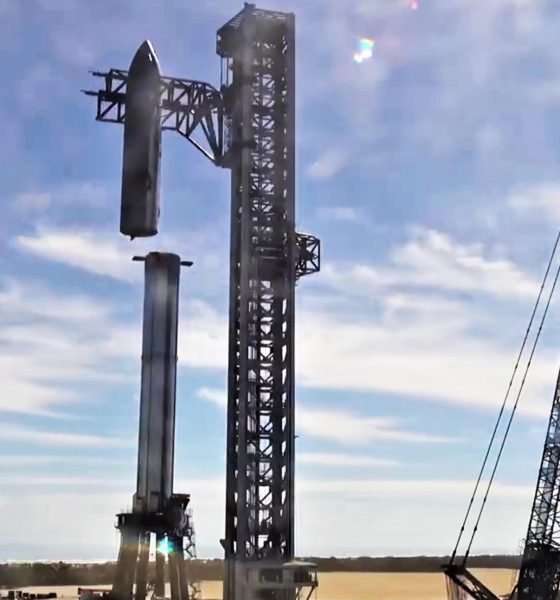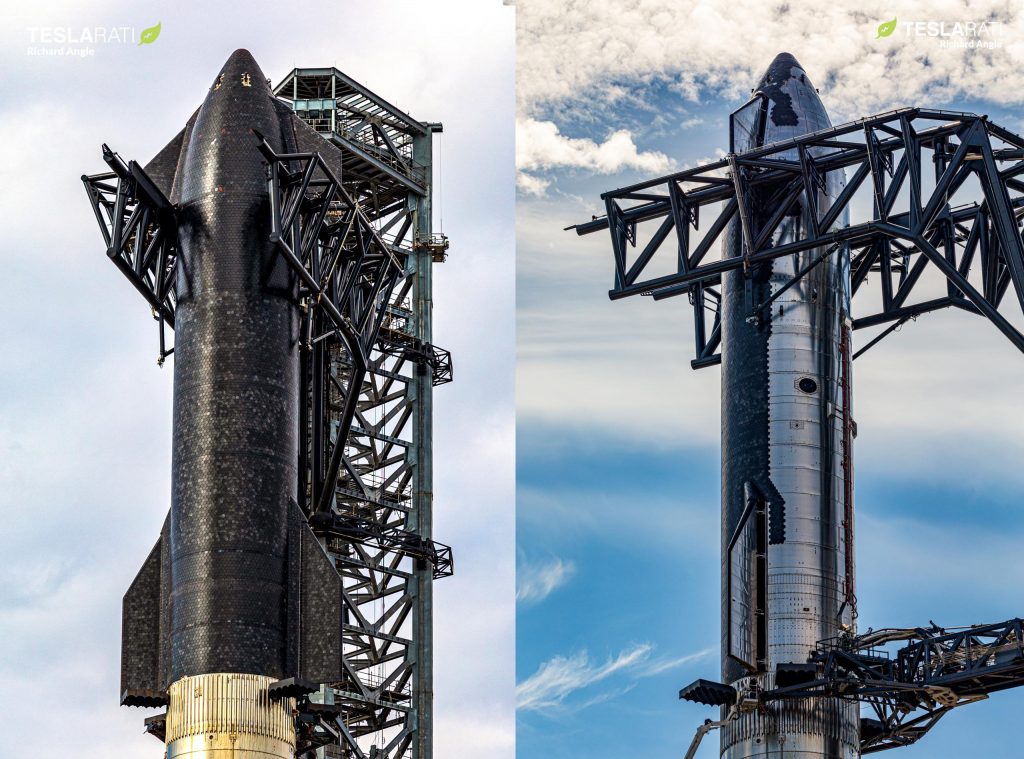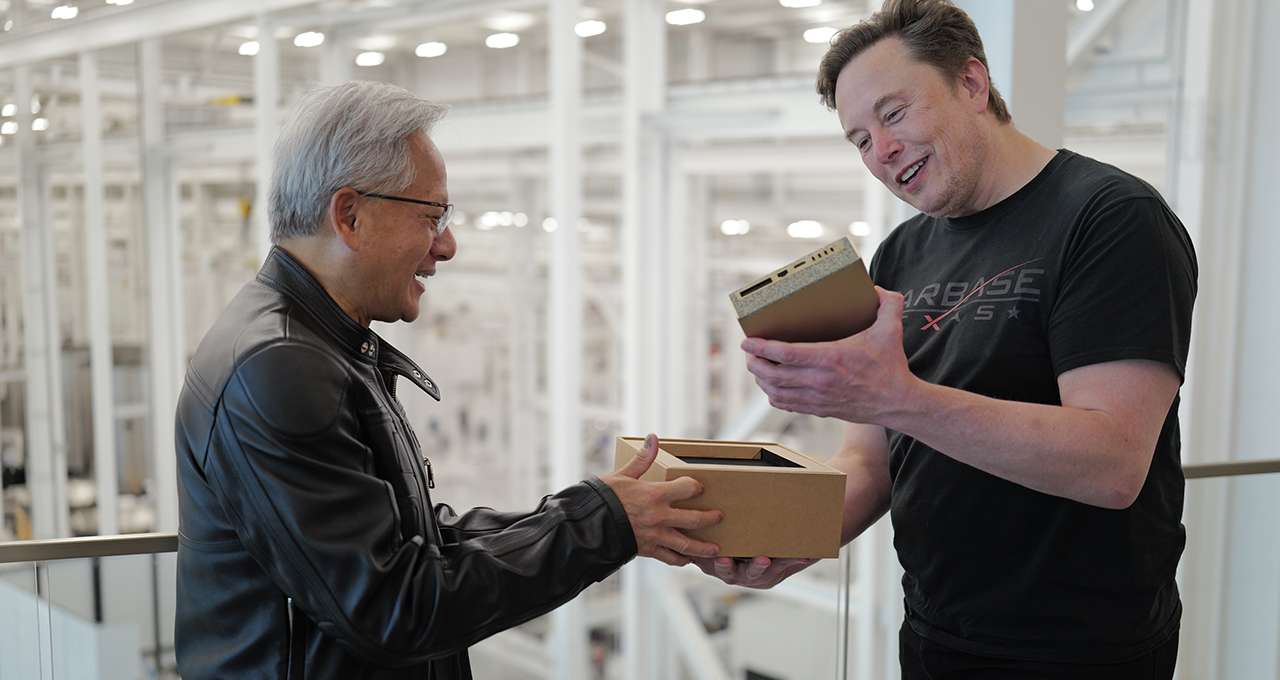

News
SpaceX ‘destacks’ Starship and Super Heavy: what’s next?
On February 14th, a bit less than four days after the giant rocket was used as a backdrop for CEO Elon Musk’s first Starship presentation in years, SpaceX lifted Starship off of the Super Heavy booster and lowered the upper stage to the ground.
In early August 2021, the same pair – Booster 4 and Ship 20 – were stacked for the first time for what was described as a fit test. After briefly forming the largest rocket ever assembled, the stages were ‘destacked’ about an hour later and would ultimately return to the Starbase factory for finishing touches. Six months, one ship cryoproof, three booster cryoproofs, and three ship static fire tests later, Ship 20 and Booster 4 were once stacked to form a massive 119-meter-tall (390 ft) tall rocket
This time around, Starship S20 was stacked on top of Super Heavy B4 not with a giant crane but with a ‘launch and integration tower’ that had been outfitted with three giant arms in the interim. The tower’s main pair of arms – ‘chopsticks’ – lifted the ~100-ton (~220,000 lb) Starship almost 100 meters off the ground, swung it over Super Heavy, and then carefully lowered the stages until Super Heavy was able to latch on.
On its first true demonstration, the complex process went far smoother than anyone outside of SpaceX expected, taking the tower just four or so hours from the start of the lift to hard mate. On February 10th, shortly before Musk’s Starship update, SpaceX even opened the ‘chopsticks’ to their full breadth, leaving all of Starship S20’s weight on Super Heavy B4 and also demonstrating what the pad will likely look like moments before the first orbital Starship launch.
On February 14th, after about four days fully stacked, the tower arms reattached to Ship 20, detached from Super Heavy, and lowered the Starship back to the ground, where it was eventually installed on a transport stand. Later that night and early the next day, SpaceX then moved the ship to a small concrete pad adjacent to the launch tower that’s believed to be meant for cryogenic proof testing. It’s unclear why SpaceX didn’t tested the fully stacked Starship given that both ship and booster have already completed multiple cryogenic proof tests (or wet dress rehearsals with real propellant) over the last few months.

It’s also unclear what more SpaceX can gain from testing Ship 20 on the ground, short of full-stack operations. On Sunday, February 13th, SpaceX did, however, begin filling the orbital launch site’s fuel tanks with liquid methane (LCH4) for the first time. It’s possible that instead of using Ship 20 to test any aspect of the relatively ancient Starship prototype, SpaceX will use Ship 20 to test the orbital tank farm – particularly the fuel side of the farm, which has yet to be tested. Perhaps after testing those systems on the ground, SpaceX will re-stack Ship 20 and Booster 4 and perform a similar wet dress rehearsal to test the tower’s plumbing, the ship-fueling arm, and the overall structural integrity of the fully-stacked rocket.
SpaceX has test windows tentatively scheduled on February 16th, 17th, and 18th.

News
Tesla extends FSD Supervised ride-alongs in Europe by three months
Needless to say, it does appear that FSD fever is starting to catch in Europe.

Tesla appears to be doubling down on its European Full Self-Driving (Supervised) push, with the company extending its demo ride-along program by three months until the end of March 2026. The update seems to have been implemented due to overwhelming demand.
Needless to say, it does appear that FSD fever is starting to catch in Europe.
Extended FSD demonstrations
Tesla EU Policy and Business Development Manager Ivan Komušanac shared on LinkedIn that the company is offering ride-along experiences in Germany, France and Italy while working toward FSD (Supervised) approval in Europe.
He noted that this provides a great feedback opportunity from the general public, encouraging participants to record and share their experiences. For those unable to book in December, Komušanac teased more slots as “Christmas presents.”
Tesla watcher Sawyer Merritt highlighted the extension on X, stating that dates now run from December 1, 2025, to March 31, 2026, in multiple cities including Stuttgart-Weinstadt, Frankfurt and Düsseldorf in Germany. This suggests that the FSD ride-along program in Europe has officially been extended until the end of the first quarter of 2026.
Building momentum for European approval
Replies to Merritt’s posts buzzed with excitement, with users like @AuzyMale noting that Cologne and Düsseldorf are already fully booked. This sentiment was echoed by numerous other Tesla enthusiasts on social media. Calls for the program’s expansion to other European territories have also started gaining steam, with some X users suggesting Switzerland and Finland as the next locations for FSD ride-alongs.
Ultimately, the Tesla EU Policy and Business Development Manager’s post aligns with the company’s broader FSD efforts in Europe. As per recent reports, Tesla recently demonstrated FSD’s capabilities for Rome officials. Reporters from media outlets in France and Germany have also published positive reviews of FSD’s capabilities on real-world roads.
News
Tesla’s six-seat extended wheelbase Model Y L sold out for January 2026
Estimated delivery dates for new Tesla Model Y L orders now extend all the way into February 2026.

The Tesla Model Y L seems to be in high demand in China, with estimated delivery dates for new orders now extending all the way into February 2026.
This suggests that the Model Y L has been officially sold out from the rest of 2025 to January 2026.
Model Y L estimated delivery dates
The Model Y L’s updated delivery dates mark an extension from the vehicle’s previous 4-8 week estimated wait time. A detailed chart shared by Tesla data tracker @Tslachan on X shows the progressions of the Model Y L’s estimated delivery dates since its launch earlier this year.
Following its launch in September, the vehicle was given an initial October 2025 estimated delivery date. The wait times for the vehicle were continually updated over the years, until the middle of November, when the Model Y L had an estimated delivery date of 4-8 weeks. This remained until now, when Tesla China simply listed February 2026 as the estimated delivery date for new Model Y L orders.
Model Y demand in China
Tesla Model Y demand in China seems to be very healthy, even beyond the Model Y L. New delivery dates show the company has already sold out its allocation of the all-electric crossover for 2025. The Model Y has been the most popular vehicle in the world in both of the last two years, outpacing incredibly popular vehicles like the Toyota RAV4. In China, the EV market is substantially more saturated, with more competitors than in any other market.
Tesla has been particularly kind to the Chinese market, as it has launched trim levels for the Model Y in the country that are not available anywhere else, such as the Model Y L. Demand has been strong for the Model Y in China, with the vehicle ranking among the country’s top 5 New Energy Vehicles. Interestingly enough, vehicles that beat the Model Y in volume like the BYD Seagull are notably more affordable. Compared to vehicles that are comparably priced, the Model Y remains a strong seller in China.
Elon Musk
NVIDIA CEO Jensen Huang commends Tesla’s Elon Musk for early belief
“And when I announced DGX-1, nobody in the world wanted it. I had no purchase orders, not one. Nobody wanted to buy it. Nobody wanted to be part of it, except for Elon.”

NVIDIA CEO Jensen Huang appeared on the Joe Rogan Experience podcast on Wednesday and commended Tesla CEO Elon Musk for his early belief in what is now the most valuable company in the world.
Huang and Musk are widely regarded as two of the greatest tech entrepreneurs of the modern era, with the two working in conjunction as NVIDIA’s chips are present in Tesla vehicles, particularly utilized for self-driving technology and data collection.
Nvidia CEO Jensen Huang regrets not investing more in Elon Musk’s xAI
Both CEOs defied all odds and created companies from virtually nothing. Musk joined Tesla in the early 2000s before the company had even established any plans to build a vehicle. Jensen created NVIDIA in the booth of a Denny’s restaurant, which has been memorialized with a plaque.
On the JRE episode, Rogan asked about Jensen’s relationship with Elon, to which the NVIDIA CEO said that Musk was there when nobody else was:
“I was lucky because I had known Elon Musk, and I helped him build the first computer for Model 3, the Model S, and when he wanted to start working on an autonomous vehicle. I helped him build the computer that went into the Model S AV system, his full self-driving system. We were basically the FSD computer version 1, and so we were already working together.
And when I announced DGX-1, nobody in the world wanted it. I had no purchase orders, not one. Nobody wanted to buy it. Nobody wanted to be part of it, except for Elon.
He goes ‘You know what, I have a company that could really use this.’ I said, Wow, my first customer. And he goes, it’s an AI company, and it’s a nonprofit and and we could really use one of these supercomputers. I boxed one up, I drove it up to San Francisco, and I delivered it to the Elon in 2016.”
The first DGX-1 AI supercomputer was delivered personally to Musk when he was with OpenAI, which provided crucial early compute power for AI research, accelerating breakthroughs in machine learning that underpin modern tools like ChatGPT.
Tesla’s Nvidia purchases could reach $4 billion this year: Musk
The long-term alliance between NVIDIA and Tesla has driven over $2 trillion in the company’s market value since 2016.








